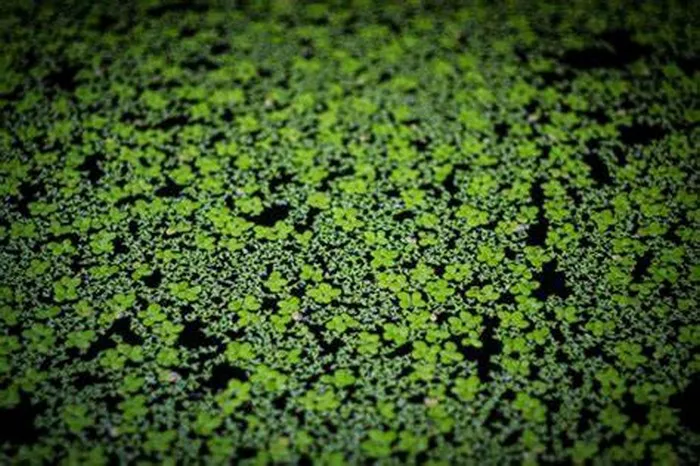In the vast and diverse tapestry of the botanical world, one finds an array of shapes, colors, and sizes, each contributing to the beauty and wonder of our planet. Among this splendid array, there exists a diminutive marvel that captivates with its delicate form and remarkable existence—the smallest flower in the world. This botanical treasure, though minuscule in stature, holds within it a wealth of fascination and scientific intrigue.
Origins and Discovery
The journey to uncovering the world’s smallest flower is a tale marked by scientific curiosity and meticulous observation. The title of the world’s smallest flower is fiercely contested, with various contenders vying for recognition based on different criteria such as size, structure, and reproductive mechanisms.
One of the most renowned contenders for this title is the Wolffia genus, commonly referred to as watermeal or duckweed. These aquatic plants are found floating on the surface of ponds, lakes, and slow-moving streams around the world. Wolffia plants are renowned for their diminutive size, with some species producing flowers that are scarcely visible to the naked eye.
The discovery of the world’s smallest flowering plant is credited to the German botanist Carl Linnaeus, who first described Wolffia microscopica in the 18th century. Linnaeus’s meticulous observations and classification laid the foundation for our understanding of plant taxonomy and helped illuminate the remarkable diversity of plant life on Earth.
Microscopic Marvels: Anatomy and Adaptations
The astonishing diminutiveness of Wolffia flowers belies their intricate structure and biological complexity. Measuring a mere fraction of a millimeter in size, these minute blooms consist of a single pistil and stamen enclosed within a translucent membrane. Despite their size, Wolffia flowers exhibit all the essential features of angiosperms, or flowering plants, including male and female reproductive organs necessary for sexual reproduction.
The microscopic scale of Wolffia flowers presents unique challenges and opportunities for plant reproduction. Unlike larger flowering plants that rely on pollinators such as bees, birds, and insects to transfer pollen between flowers, Wolffia species utilize a process known as hydrophily. In hydrophily, pollen grains are dispersed by water, allowing for efficient fertilization in aquatic environments.
Wolffia plants have also evolved specialized adaptations to thrive in their aquatic habitats. Their tiny size and flattened morphology minimize resistance to water flow, enabling them to drift effortlessly on the water’s surface. Additionally, their rapid growth rates and ability to reproduce vegetatively contribute to their success as a widespread and prolific group of aquatic plants.
Ecological Significance and Conservation
Despite their diminutive size, Wolffia plants play a vital role in aquatic ecosystems and serve as indicators of environmental health. These tiny plants provide food and habitat for a variety of aquatic organisms, including insects, fish, and waterfowl. Additionally, they contribute to nutrient cycling and help maintain water quality by absorbing excess nutrients and pollutants from the water.
However, like many aquatic plants, Wolffia species face threats from habitat loss, pollution, and invasive species. Human activities such as urbanization, agriculture, and deforestation can degrade or destroy the wetland habitats that Wolffia plants rely on for survival. Climate change further exacerbates these threats by altering precipitation patterns and temperature regimes, leading to shifts in aquatic ecosystems and the potential loss of biodiversity.
Conservation efforts aimed at protecting Wolffia species and their habitats are essential for preserving these remarkable plants and the ecosystems they inhabit. Strategies such as wetland restoration, pollution control, and habitat preservation can help safeguard the future of Wolffia populations and ensure their continued contribution to aquatic biodiversity.
Scientific Inquiry and Future Discoveries
The study of the world’s smallest flower continues to inspire scientific inquiry and exploration. Advances in microscopy and imaging technology have enabled researchers to delve deeper into the intricate structure and function of Wolffia flowers, uncovering new insights into their reproductive biology and ecological significance.
Moreover, ongoing efforts to catalog and document plant diversity worldwide have led to the discovery of new species and variants of Wolffia plants, further enriching our understanding of their evolutionary history and genetic diversity. Collaborative initiatives such as the Global Biodiversity Information Facility (GBIF) and the International Union for Conservation of Nature (IUCN) provide platforms for scientists and conservationists to share data, exchange knowledge, and coordinate conservation efforts on a global scale.
As we peer into the microscopic world of Wolffia flowers, we are reminded of the boundless wonders that await discovery in the natural world. From the smallest flower to the grandest tree, each organism embodies a testament to the beauty, complexity, and resilience of life on Earth. Through continued exploration, conservation, and stewardship, we can ensure that future generations inherit a world teeming with biodiversity and wonder.
Conclusion
In conclusion, the smallest flower in the world, exemplified by species within the Wolffia genus, serves as a poignant reminder of the extraordinary diversity and ingenuity of the natural world. Though diminutive in size, these tiny blooms possess a majesty and significance that belies their stature, captivating hearts and minds with their delicate beauty and remarkable adaptations. As we celebrate and cherish these botanical treasures, let us also reaffirm our commitment to preserving and protecting the rich tapestry of life that sustains us all.


